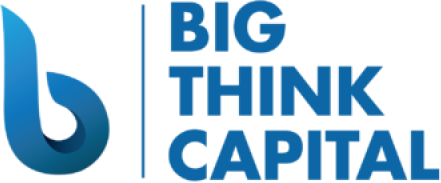Understanding the Impact of Inflation Trends and Federal Interest Rate Decisions on Small Business Financing in 2025
Estimated Reading Time: 6 minutes
- Stay informed about economic trends and federal announcements.
- Evaluate multiple financing options and their impacts.
- Work with funding experts to navigate complex options.
Table of Contents
- The Current State of Inflation in 2025
- Federal Interest Rate Decisions and Their Effects
- Impact on Specific Loan Products
- Practical Takeaways for Business Owners
- Conclusion
- FAQ
The Current State of Inflation in 2025
As of early 2025, inflation continues to be a hot topic in financial discussions across the United States. After a challenging couple of years through the pandemic and various economic fluctuations, the inflation rate has stabilized but remains elevated compared to the historical average. The Consumer Price Index (CPI) shows an annual inflation rate hovering around 4.5%, according to the U.S. Bureau of Labor Statistics. This high inflation impacts purchasing power, consumer spending, and subsequently, small businesses’ operational costs.
For business owners, staying ahead of inflation means adapting financing strategies to not only mitigate costs but also leverage opportunities that arise from changing economic conditions. Understanding inflation’s influence on interest rates is crucial.
Federal Interest Rate Decisions and Their Effects
The Federal Reserve plays a pivotal role in shaping the economic landscape through its monetary policy, particularly interest rate decisions. As inflation remains a concern, the Fed has adopted an active approach in managing interest rates. In its recent meetings, the Federal Reserve Board signaled that it would maintain a cautious stance, opting for incremental interest rate adjustments rather than aggressive hikes. This strategic approach is designed to combat inflation without stalling economic recovery.
But what does this mean for small business financing in 2025? Here are a few key considerations:
- Borrowing Costs Increase: Higher federal interest rates generally translate into higher borrowing costs for small businesses. As lenders adjust their rates, business owners may find loan repayments becoming more expensive, which can strain cash flow, especially for businesses reliant on loans for daily operations.
- Impact on Loan Demand: When interest rates rise, the demand for loans can decrease. Business owners may postpone investments or expansions due to the increased cost of financing. However, there may also be an influx of applications for loans as businesses seek capital before potentially facing higher rates in the future.
- Product Variability: Different loan products react to interest rate changes in varying manners. Understanding these nuances can help business owners choose the right financing option.
Impact on Specific Loan Products
Each type of financing has its unique characteristics and implications in the current economic climate. Let’s break down how inflation and federal interest rates are affecting:
SBA Loans
SBA loans have long been a steadfast option for small businesses due to their favorable terms. However, as interest rates rise, the overall cost of these loans may increase. While the SBA offers guarantees to encourage lenders to issue loans, higher rates can negate some of the benefits. Here’s what to know:
- Eligibility and Approval Processes: Despite higher interest, SBA loans might remain the most affordable option for long-term financing. Existing and new business owners should explore eligibility requirements thoroughly. The precise focus is especially on demonstrating the potential for growth in a post-pandemic environment.
- Interest Rate Limits: The SBA has established maximum rates lenders can charge. Understanding these limits can help you negotiate better terms with financiers.
- Long-Term Investment Viability: SBA loans typically support longer-term investments. In times of inflation, this can be beneficial as it allows you to finance renovations, equipment purchases, or expansion at potentially lower current costs.
Equipment Financing
Equipment financing is another critical area where inflation and interest rates come into play. Businesses that require up-to-date equipment may face challenges:
- Increased Equipment Costs: As inflation impacts manufacturing and logistics costs, the price of new equipment may rise. This affects your overall financing needs.
- Financing Alternatives: With interest rates fluctuating, consider the possibility of securing financing directly through equipment manufacturers. Often, they provide promotional rates that may be more favorable than traditional financing channels.
- Resale Value Considerations: In an inflationary environment, while investing in equipment, businesses should consider potential resale value, which can be higher during periods of inflation.
Merchant Cash Advances
Merchant Cash Advances (MCAs) serve as quick financing options for businesses. They come with unique pros and cons especially in the context of current economic conditions.
- Flexible Access to Cash: MCAs are based on your future sales, so they provide quicker access to capital. However, be mindful that they often come with higher effective interest rates than conventional loans. Businesses must evaluate whether swift access to funds is worth the higher costs.
- Repayment Structures: Understanding the repayment structure is key. With fixed daily or weekly payments tied to your sales, you’ll need to assess how inflation might affect your cash flow and ability to repay.
- Short-Term Relief vs. Long-Term Strategy: While MCAs can provide immediate funding relief, they shouldn’t be viewed as a long-term strategy. Businesses will want to explore alternatives that offer more favorable repayment terms as market conditions change.
Business Lines of Credit
A business line of credit offers flexibility for ongoing expenses or unexpected costs. In a fluctuating interest rate environment, here’s how you can leverage this financing option:
- Variable Interest Rates: Lines of credit typically have variable interest rates. This means as the Fed raises rates, costs could gradually increase. Monitoring interest rates will help businesses strategically draw from their lines of credit.
- Usage Strategy: Use your line of credit wisely for short-term needs, such as inventory purchases or emergency expenses, while considering alternatives for significant long-term investments.
- Avoiding Over-Reliance: While lines of credit can be a lifesaver, avoid becoming overly dependent on them. Developing a diversified financing strategy can enhance stability.
Practical Takeaways for Business Owners
As inflation trends and interest rates evolve in 2025, small business owners should consider the following takeaways to maximize their financing options:
- Stay Informed: Regularly monitor economic reports and Fed announcements. Understanding financial trends will empower you to time your financing strategy effectively.
- Evaluate Multiple Options: Assess all available financing products. Each has distinct benefits and costs that can impact your business differently based on your unique circumstances.
- Work with Experts: Engaging with professionals can help in navigating complex funding options. Big Think Capital’s experts are here to guide you through various financing alternatives tailored to your business needs.
Conclusion
In 2025, small business financing will be influenced significantly by inflation trends and federal interest rate decisions. As we navigate these changes, understanding how different loan products respond to economic shifts will position you for success. Whether considering an SBA loan, equipment financing, merchant cash advances, or a business line of credit, being informed and strategic is key.
At Big Think Capital, we are dedicated to helping small business owners secure the funding they need to thrive. If you’re exploring your financing options, visit bigthinkcapital.com or speak with one of our funding experts today. Maximize your potential in this evolving landscape with the right financial resources. Your business success is our mission.
FAQ
Q: How does inflation affect loan interest rates?
A: Inflation typically leads to higher interest rates as lenders attempt to maintain their profit margins and offset the erosion of purchasing power.
Q: What steps can business owners take to manage financing costs?
A: Business owners should consider fixing their interest rates, exploring a variety of financing options, and monitoring economic indicators to make informed decisions.
Q: Are SBA loans still a viable option during inflation?
A: Yes, despite rising rates, SBA loans can remain an affordable long-term financing solution if business owners understand their eligibility and negotiate terms effectively.






